© 2025 MJH Life Sciences™ , Patient Care Online – Primary Care News and Clinical Resources. All rights reserved.
Infectious Disease: 9 Catching Questions
Are you up-to-date on the latest infectious disease research? Find out with these 9 catching questions.
Recent studies, commentaries, and reports have described the latest findings in infectious disease research. Take this brief quiz to test your knowledge of developments and issues of interest to primary care practice.
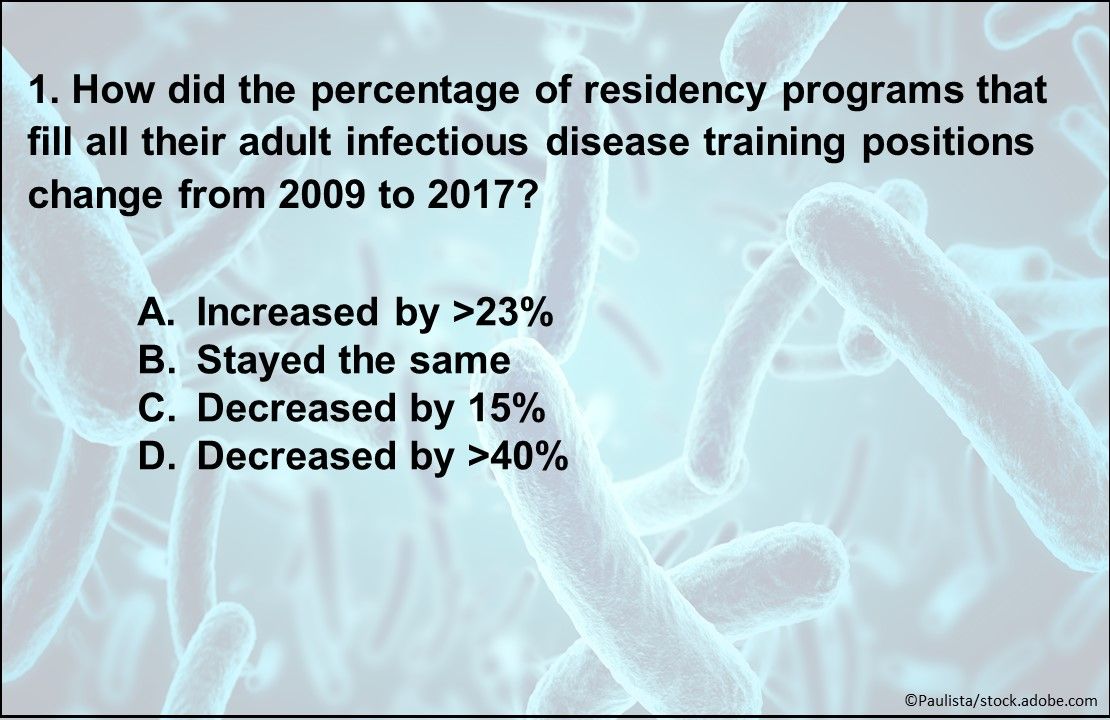
Question 1. How did the percentage of residency programs that fill all their adult infectious disease training positions change from 2009 to 2017?
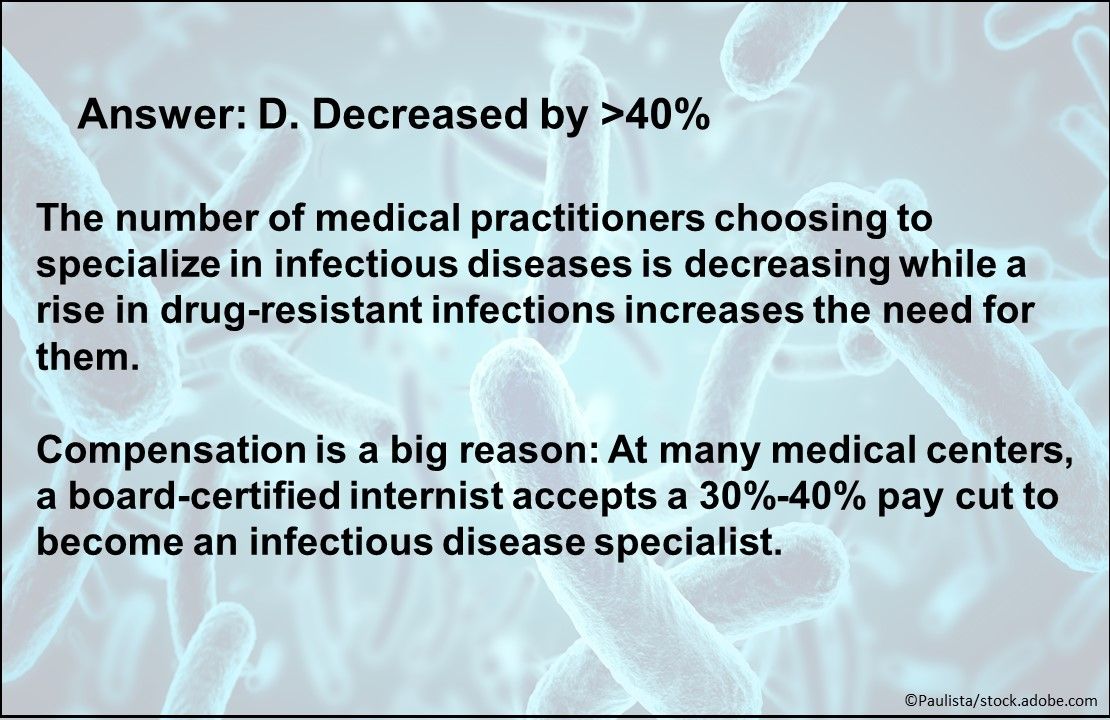
Answer: D. Decreased by >40%. The number of medical practitioners choosing to specialize in infectious diseases is decreasing while a rise in drug-resistant infections increases the need for them. Compensation is a big reason: At many medical centers, a board-certified internist accepts a 30%-40% pay cut to become an infectious disease specialist.

Question 2. In a recent comparison of physician types according to the complexity of patients they see, where did infectious disease specialists and family physicians rank?
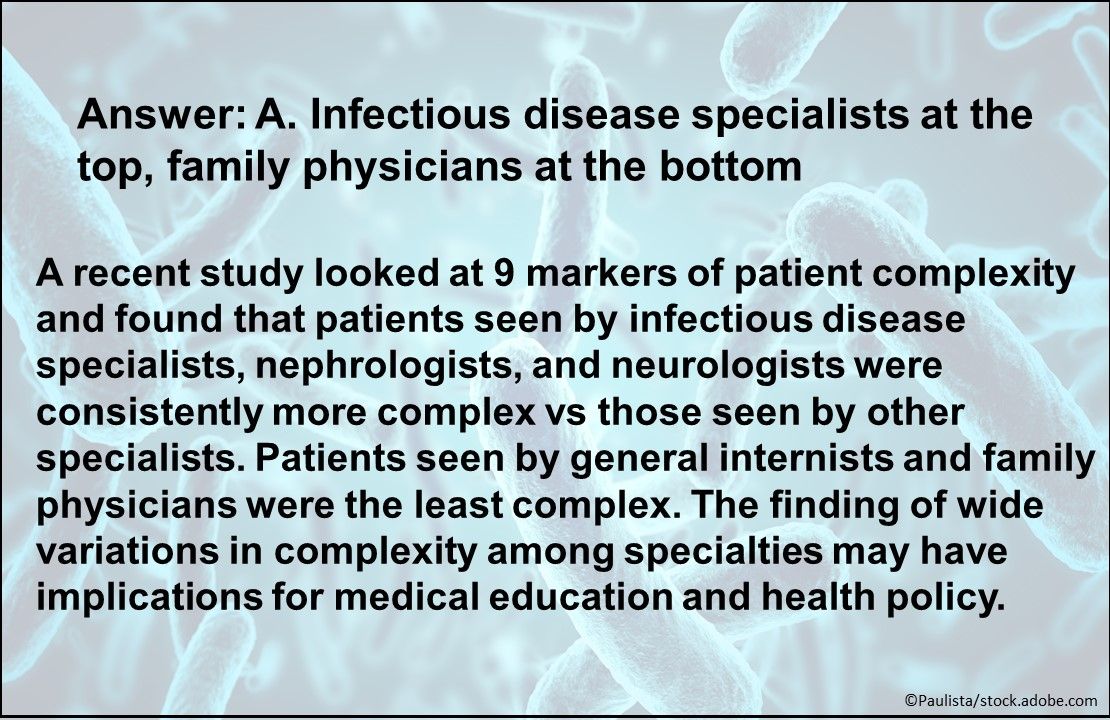
Answer: A. Infectious disease specialists at the top, family physicians at the bottom. A recent study looked at 9 markers of patient complexity and found that patients seen by infectious disease specialists, nephrologists, and neurologists were consistently more complex vs those seen by other specialists. Patients seen by general internists and family physicians were the least complex. The finding of wide variations in complexity among specialties may have implications for medical education and health policy.

Question 3. True or false? A surge in HIV/AIDS, hepatitis, heart infections, skin and soft tissue infections, and other infectious diseases was recently cited as a byproduct of the ongoing opioid epidemic.
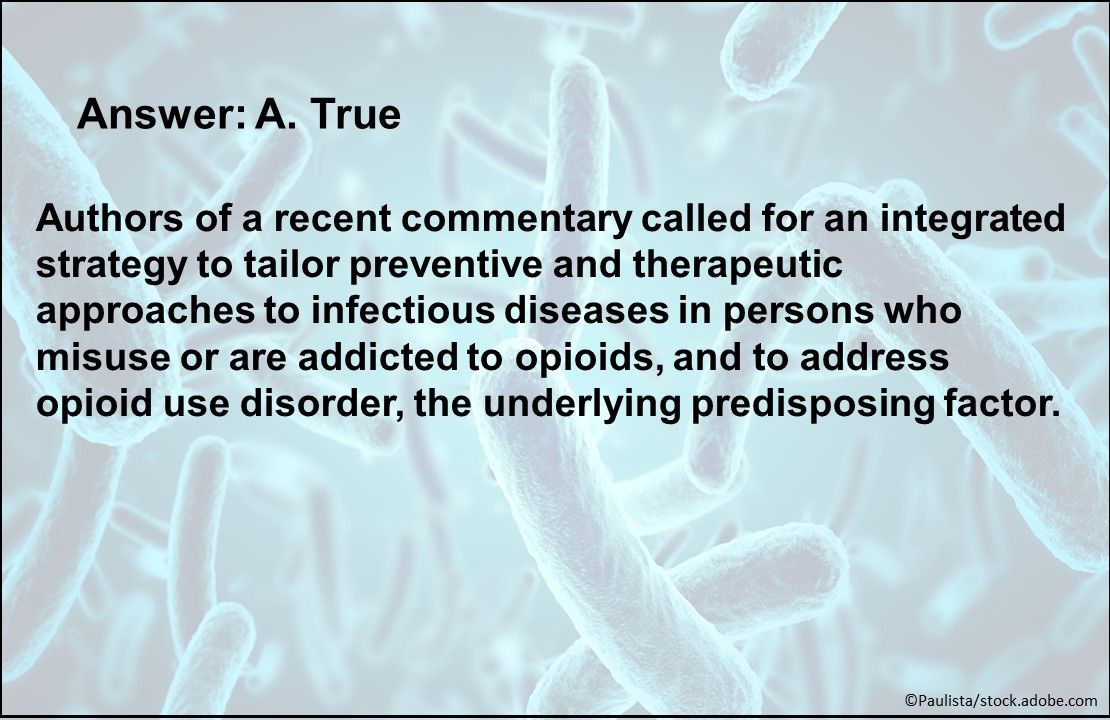
Answer: A. True. Authors of a recent commentary called for an integrated strategy to tailor preventive and therapeutic approaches to infectious diseases in persons who misuse or are addicted to opioids, and to address opioid use disorder, the underlying predisposing factor.
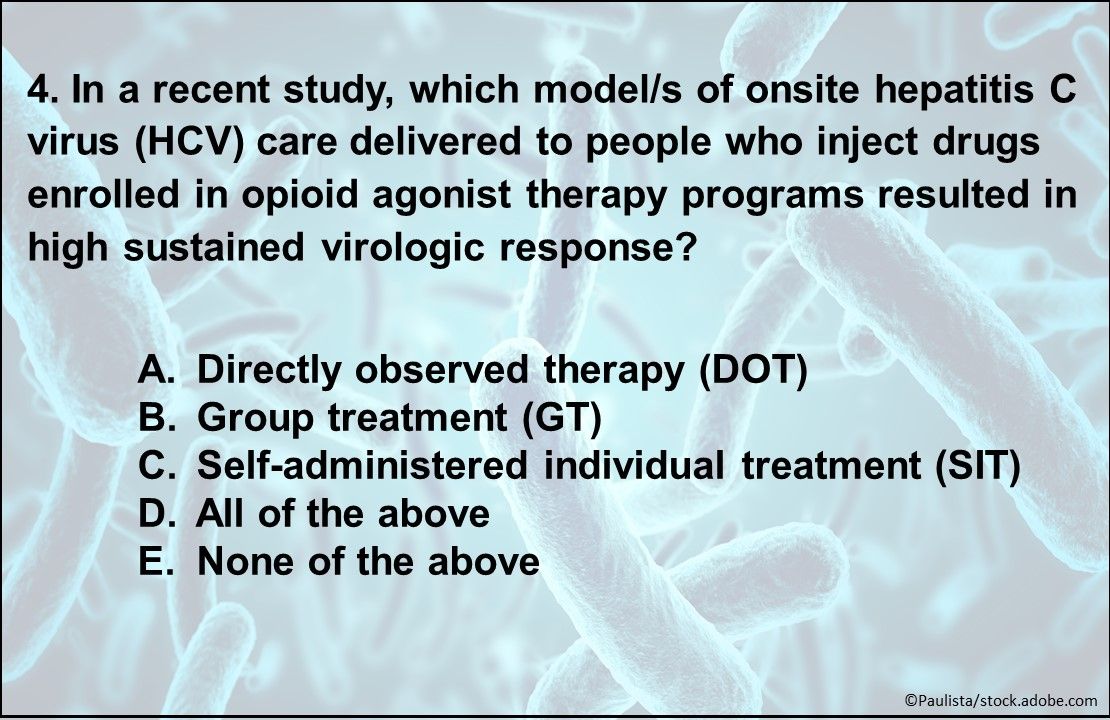
Question 4. In a recent study, which model/s of onsite HCV care delivered to people who inject drugs enrolled in opioid agonist therapy programs resulted in high sustained virologic response?
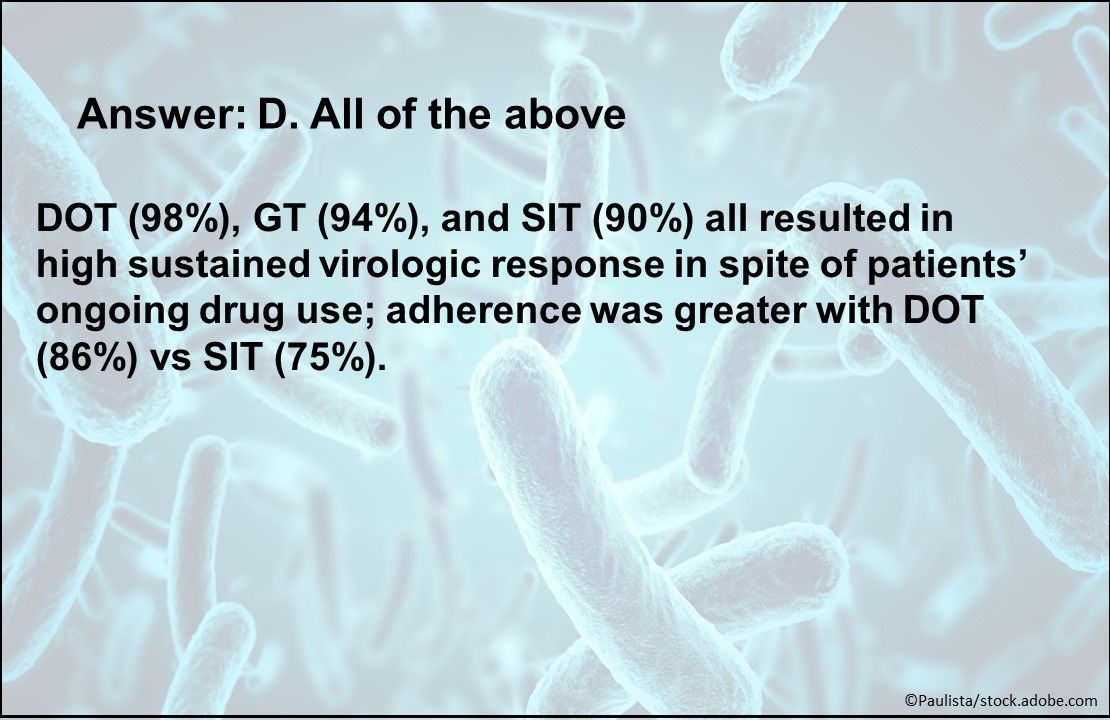
Answer: D. All of the above. DOT (98%), GT (94%), and SIT (90%) all resulted in high sustained virologic response in spite of patients’ ongoing drug use; adherence was greater with DOT (86%) vs SIT (75%).
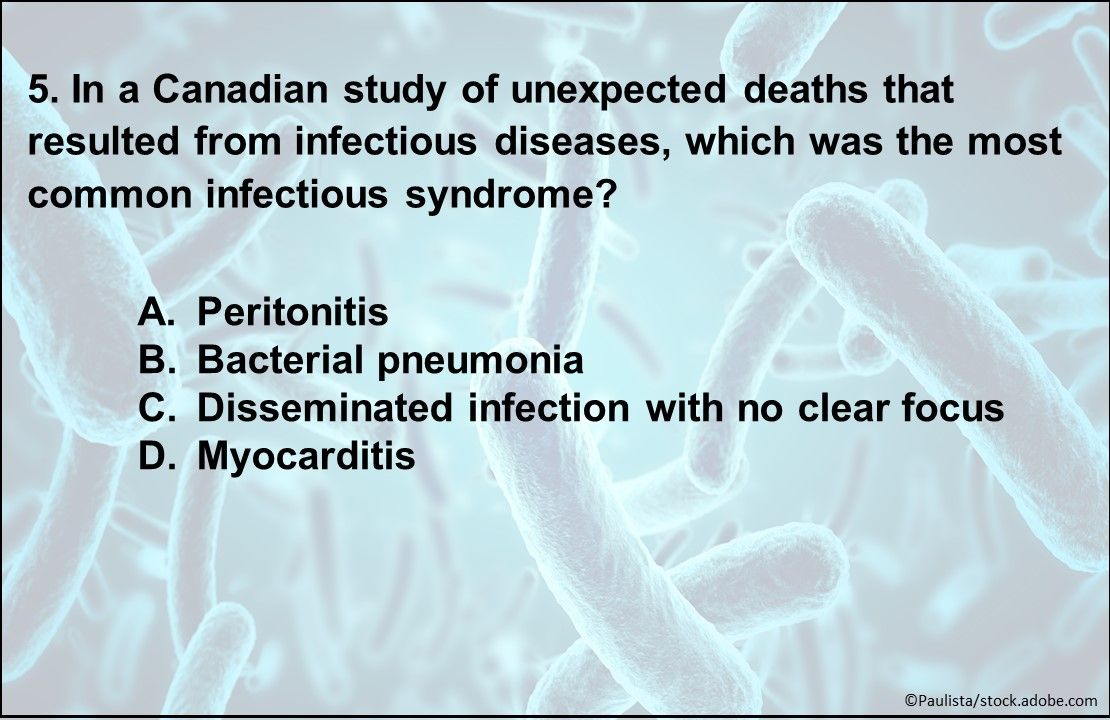
Question 5. In a Canadian study of unexpected deaths that resulted from infectious diseases, which was the most common infectious syndrome?
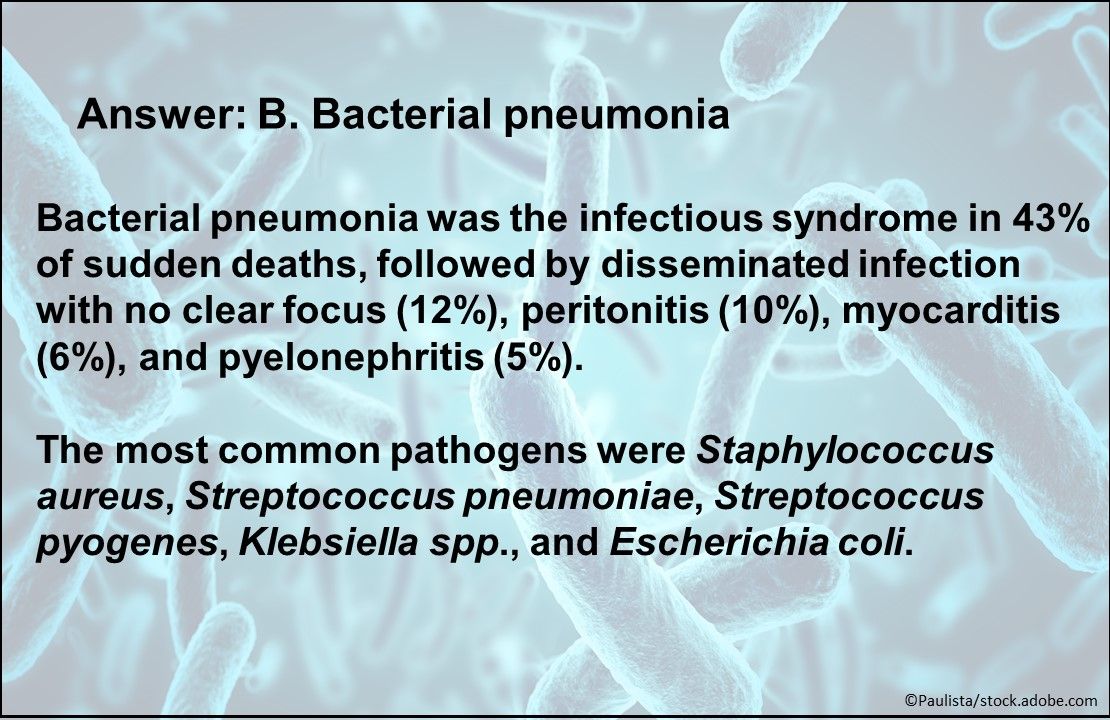
Answer: B. Bacterial pneumonia. Bacterial pneumonia was the infectious syndrome in 43% of sudden deaths, followed by disseminated infection with no clear focus (12%), peritonitis (10%), myocarditis (6%), and pyelonephritis (5%). The most common pathogens were Staphylococcus aureus, Streptococcus pneumoniae, Streptococcus pyogenes, Klebsiella spp., and Escherichia coli.

Question 6. True or false? The risk of bacterial STIs in gay and bisexual men decreases after initiation of HIV PrEP.
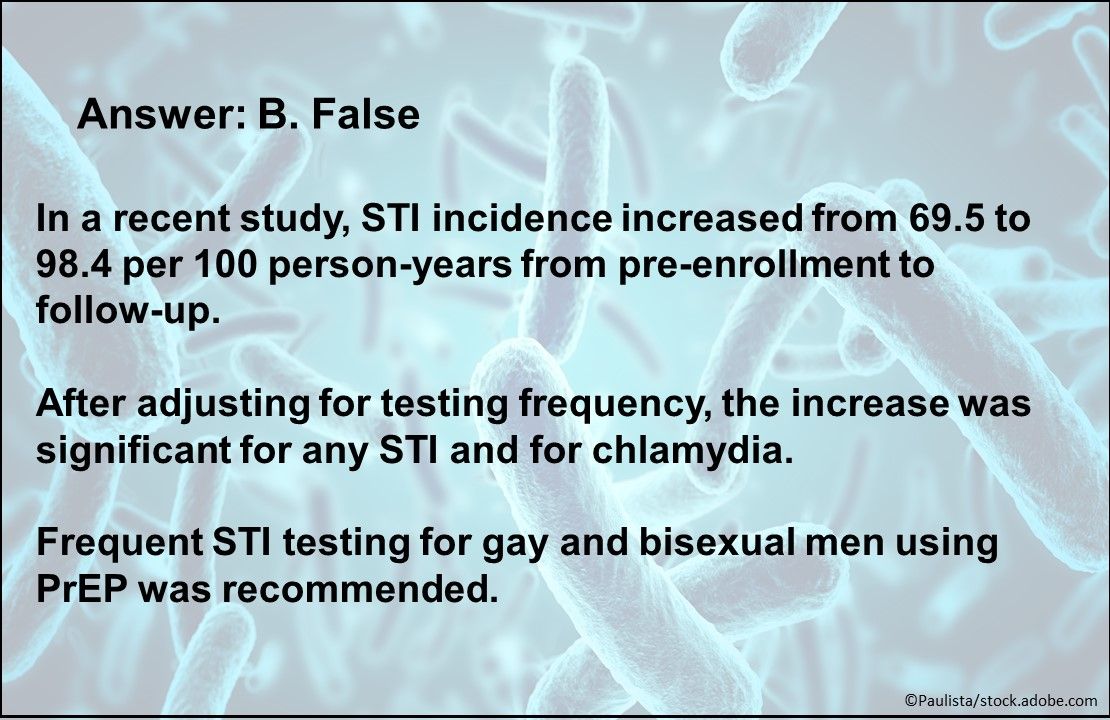
Answer: B. False. In a recent study, STI incidence increased from 69.5 to 98.4 per 100 person-years from pre-enrollment to follow-up. After adjusting for testing frequency, the increase was significant for any STI and for chlamydia. Frequent STI testing for gay and bisexual men using PrEP was recommended.
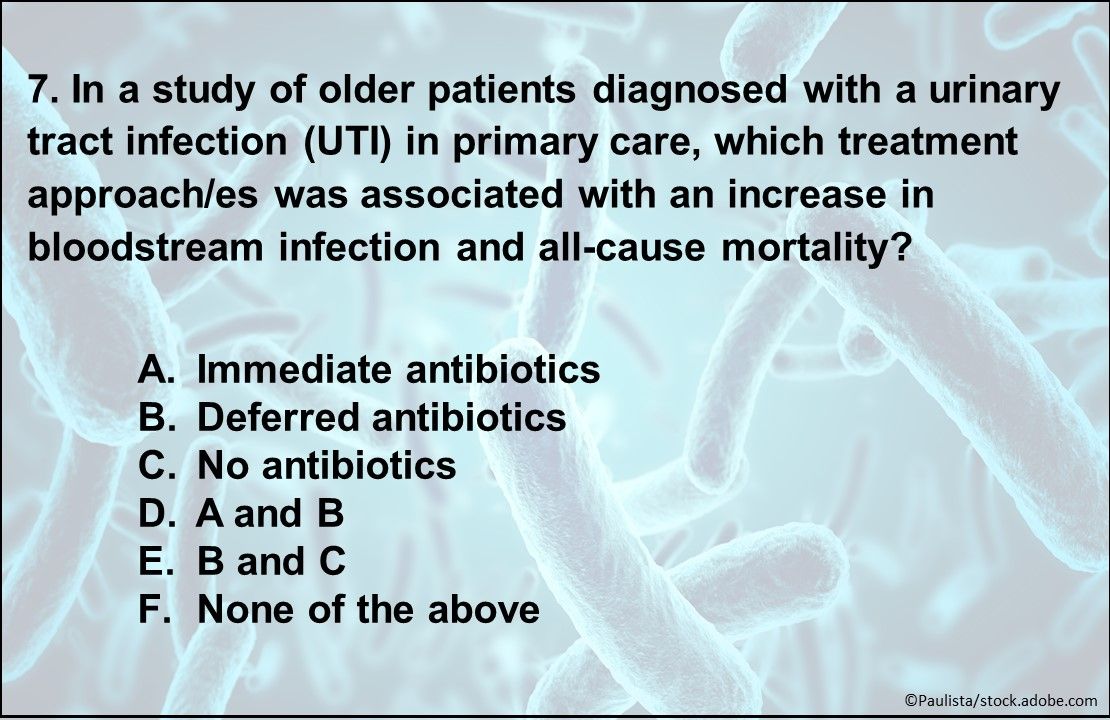
Question 7. In a study of older patients diagnosed with a UTI in primary care, which treatment approach/es was associated with an increase in bloodstream infection and all-cause mortality?
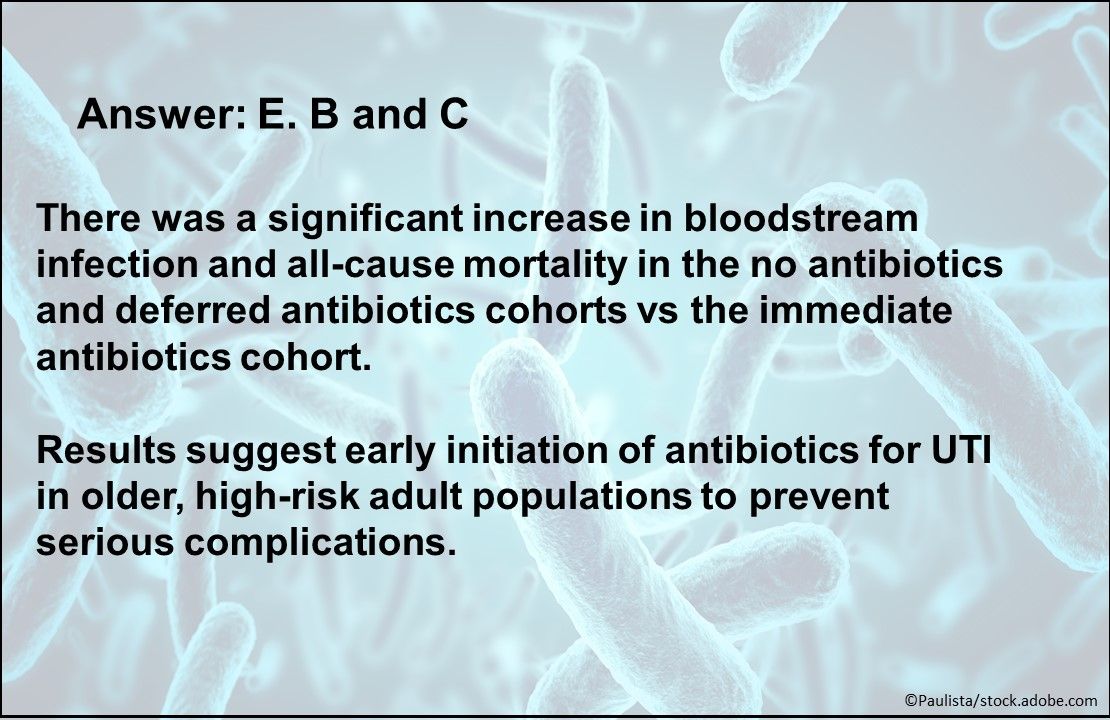
Answer: E. B and C. There was a significant increase in bloodstream infection and all-cause mortality in the no antibiotics and deferred antibiotics cohorts vs the immediate antibiotics cohort. Results suggest early initiation of antibiotics for UTI in older, high-risk adult populations to prevent serious complications.
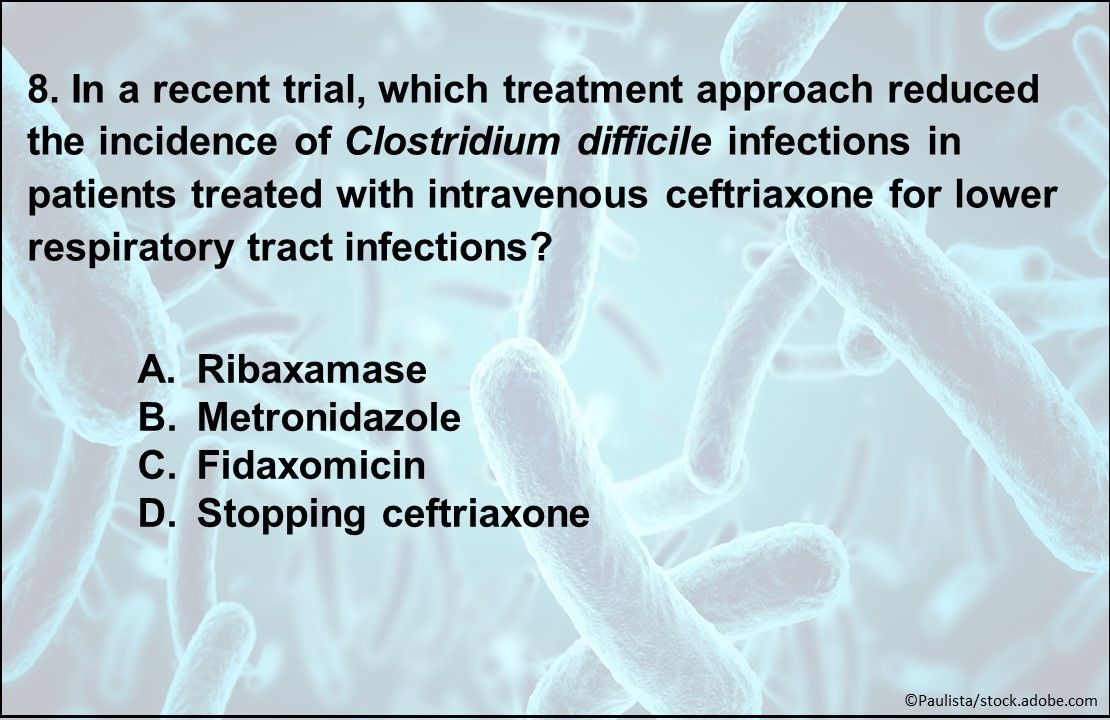
Question 8. In a recent trial, which treatment approach reduced the incidence of Clostridium difficile infections in patients treated with intravenous ceftriaxone for lower respiratory tract infections?
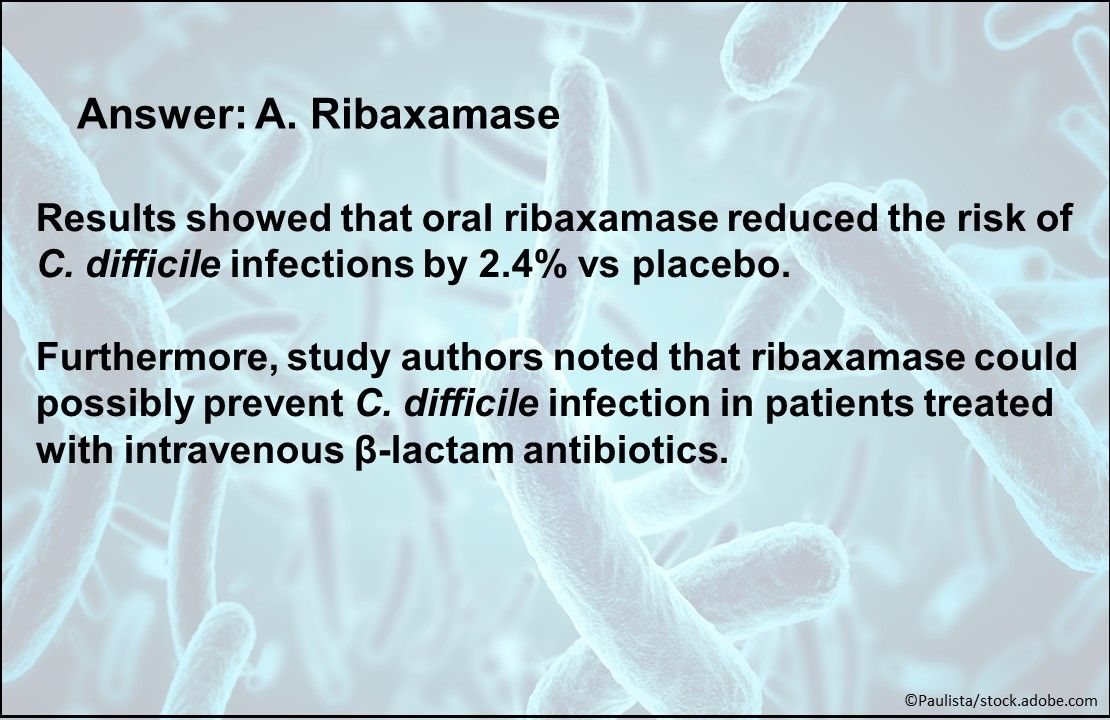
Answer: A. Ribaxamase. Results showed that oral ribaxamase reduced the risk of C. difficile infections by 2.4% vs placebo. Furthermore, study authors noted that ribaxamase could possibly prevent C. difficile infection in patients treated with intravenous β-lactam antibiotics.

Question 9. How has the AAP advised families to protect their children against the influenza virus this year?
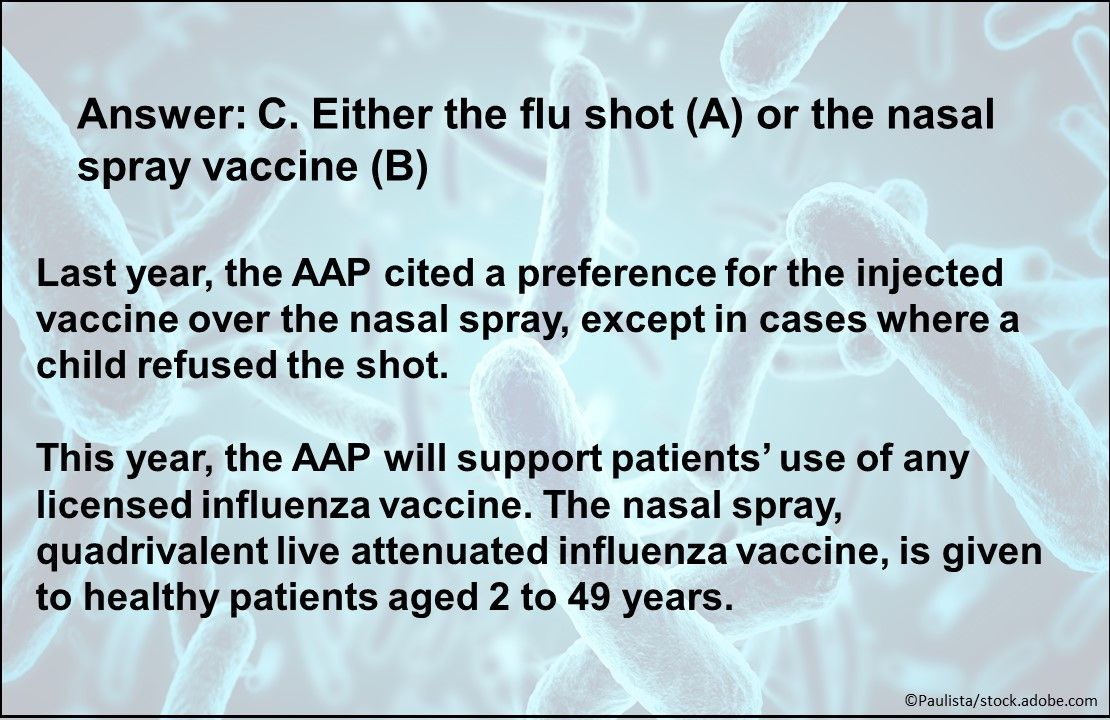
Answer: C. Either the flu shot (A) or the nasal spray vaccine (B). Last year, the AAP cited a preference for the injected vaccine over the nasal spray, except in cases where a child refused the shot. This year, the AAP will support patients’ use of any licensed influenza vaccine. The nasal spray, quadrivalent live attenuated influenza vaccine, is given to healthy patients aged 2 to 49 years.
For more information on all questions and answers, please visit Updates in Infectious Disease: Spreading the Word.
Related Content:




